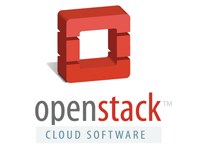HP’s public cloud… IBM and Red Hat on board… Rackspace finally making the jump… OpenStack is so hot right now.
To discover why, check out ServerWatch, which has some great OpenStack coverage. The bottom line is that here’s a platform that has the potential to do for cloud infrastructures — public, private and hybrid clouds — what Linux has done for commodity servers. In short, OpenStack “opens up” the power of cloud computing to the masses with the freedom of open source licensing.
But will increased adoption also threaten to make OpenStack the poster child for power-hungry clouds?
Tom Raftery at Enterprise Irregulars recently blogged about cloud services providers and the lack of transparency when it comes to energy consumption. This, naturally, makes him skeptical that cloud computing is green. Though I’ll take one expertly run data center over hundreds (thousands?) of inefficient server closets, he does bring up a good point.
An even better point: Why not make an energy-aware OpenStack distro? He writes:
Well, it occurred to me, during the analyst day, that because OpenStack is open source, anyone can fork it and write a version with built-in energy and emissions reporting. What would be really cool is, if this functionality, having been written, became a part of the core distribution – then anyone deploying OpenStack, would have this functionality by default…
Awesome idea! And one company is already tackling power management on OpenStack infrastructures.
Intel, an OpenStack partner, is addressing power management (and somewhat relatedly VM security). In the Intel Cloud Builders Guide to Cloud Design and Deployment on Intel Platforms (PDF), the company gives credence to Raftery’s concerns:
Even though servers have become much more efficient, packaging densities and power have increased much faster. As a result, power and its associated thermal characteristics have become the dominant components of datacenter operational costs.
However, it also offers some neat energy management tools for real-time power monitoring, capping power use and (energy) policy-based virtual machine migrations. Exciting stuff, but alas, these capabilities, which are accessible via OpenStack extensions, are targeted at private clouds build on Xeon 5500- and 5600-based servers.
Maybe some enterprising coders can work on getting similar functionality folded into OpenStack? Learn more about the OpenStack community here.


Leave a Reply